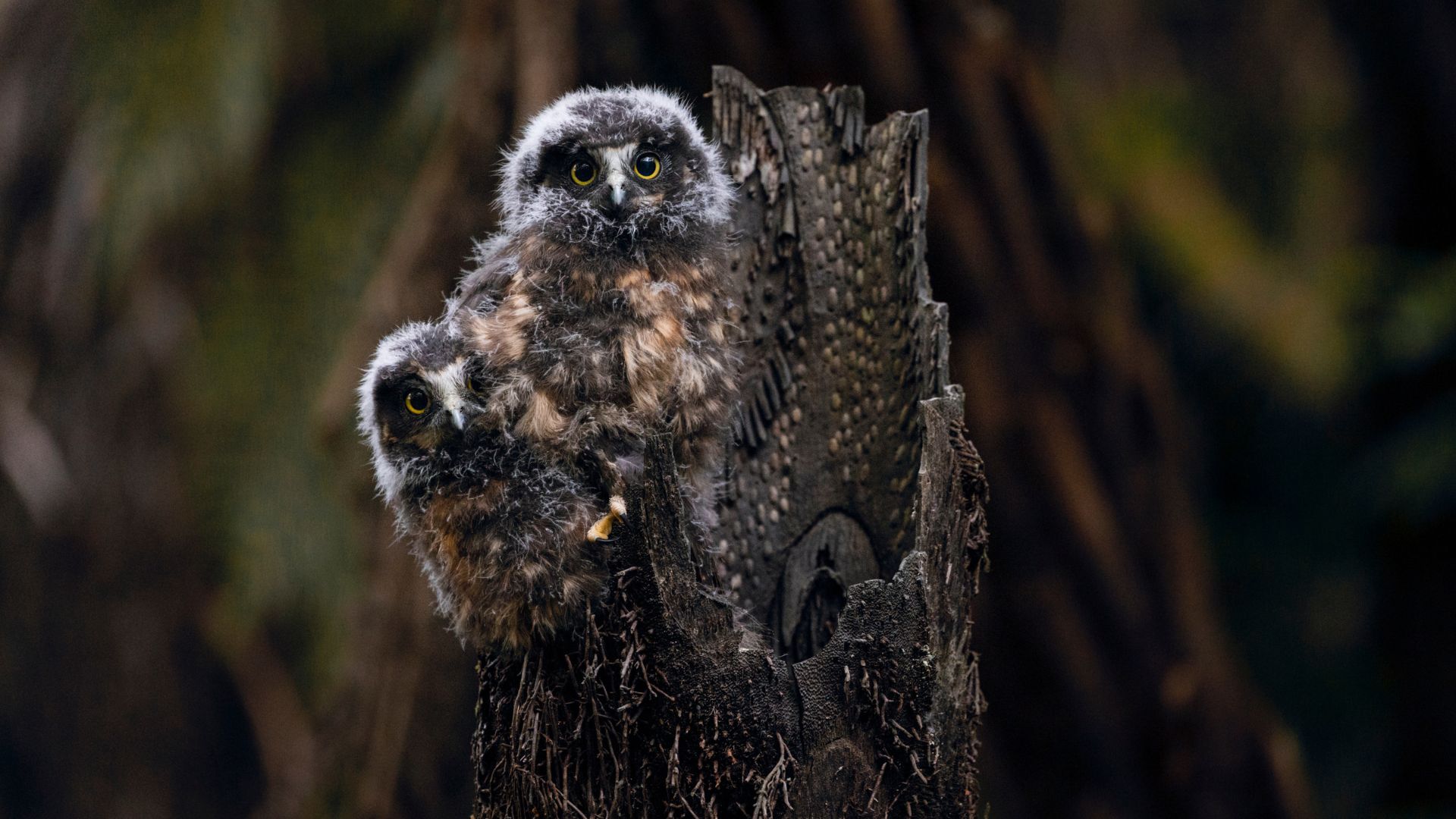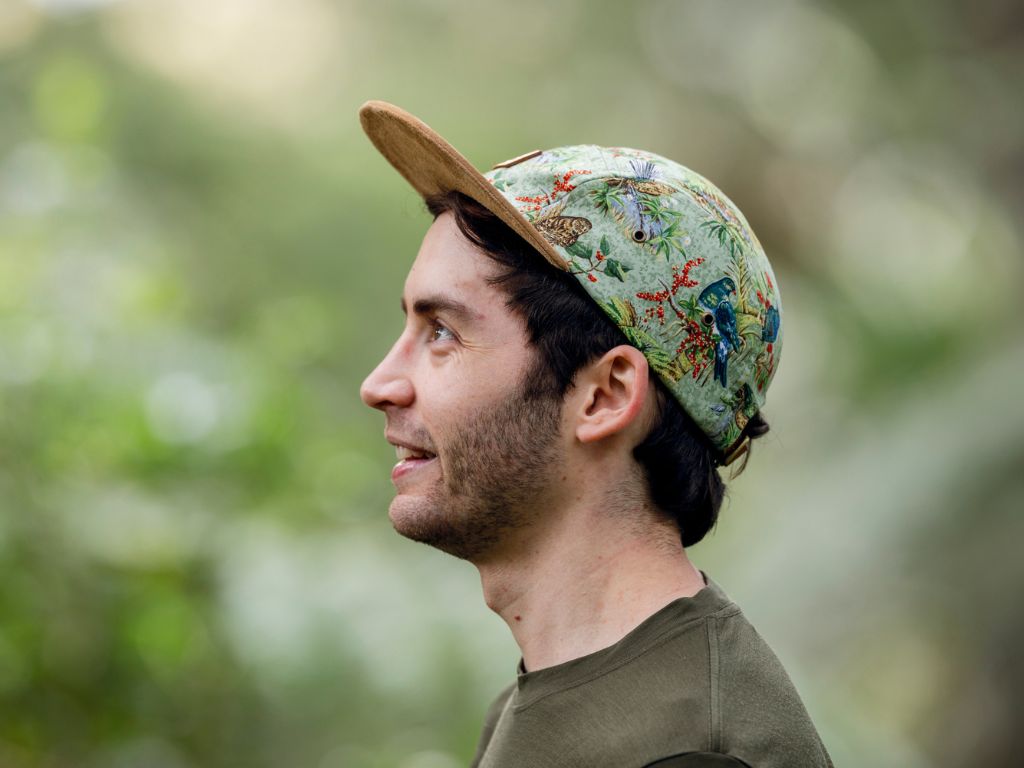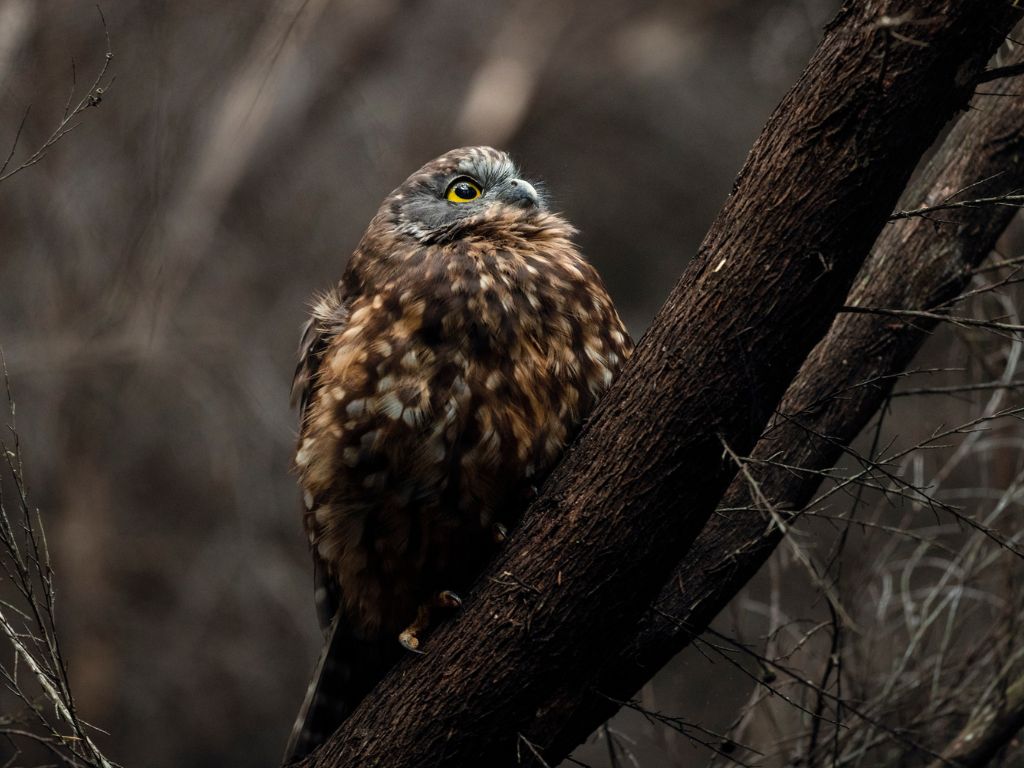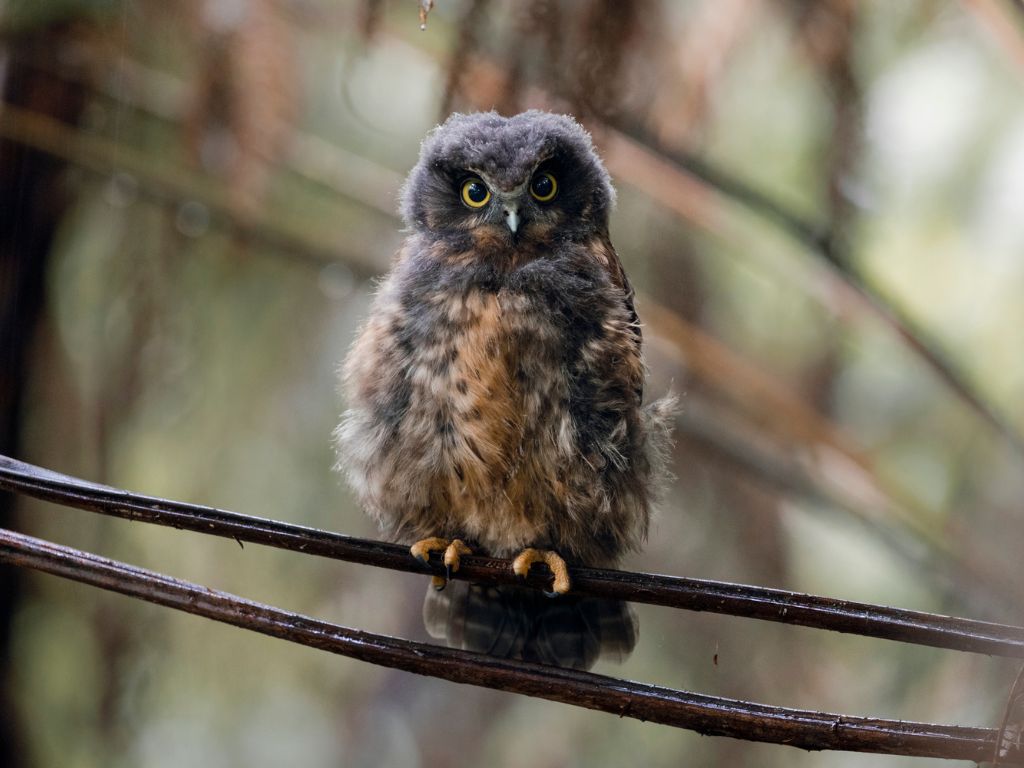Rowan Nicholson has been there for moments few humans have witnessed: the secretive nocturnal mating of ruru (morepork) and the wide-eyed wonder of newly hatched chicks taking in the world for the first time.

“Ruru guru” is not a title the 31-year-old from Auckland ever expected to hold. As a video game animator by day, he didn’t set out to become a chronicler of New Zealand’s last remaining native owl by night. But what began as a COVID-19 lockdown photography distraction has become far more. He builds nests, removes predators and has gained their trust.
A chance encounter
Like many of us, Rowan grew up hearing the onomatopoeic call of the ruru but never saw one. They are notoriously hard to spot, being nocturnal, 29cm tall (less than the height of a ruler), and dark speckled brown. A fellow photographer gave him a tip: look for them at dusk, in shady spots with tree ferns, like ponga.
Rowan ventured into a forested gully at a golf course near where he lived in Auckland.
Surprisingly, it didn’t take long.
“This thing swooped in front of me, and I thought ‘no way’, but it landed on a perch of a ponga at eye level.
“It was such an experience. What are the chances? It was like it was meant to be.”
Rowan returned to the gully every day, camera in hand. He pieced together the lives of the ruru pair living in the golf course’s scrap of forest – where they roosted, what they ate, their communication calls.
A month in, he saw something so rare it made the Department of Conservation (DOC) take notice: the pair mating.
“I filmed it and a few DOC rangers were like ‘We’ve never seen that in the wild.’”

The more he watched, the more invested he became. He saw the pair attempt to nest on the ground, only to lose their eggs, potentially by a cat, possum, rat, or hedgehog.
When Rowan moved to the semi-rural outskirts of Auckland, he left behind his first ruru pair. But in the neglected bush gully behind his new home, another pair awaited, along with the challenges of introduced predators.
From photographer to protector
At his new digs, Rowan immediately began scouting the steep bush gully that runs behind his and his neighbour’s properties. As luck would have it, he found a pair.
Recalling the toll predators take on nesting ruru, he built nest boxes and set up a trapline with various traps to target possums, rats and mustelids, including Timms traps, self-resetting Goodnature A24s, a DOC 200 and Victor Professional rat traps.

“I’ve logged about 300 kills,” he says. Anecdotally, he reckons the forest feels more alive with healthier foliage, plus more tūī and kererū. The ruru have also nested successfully for two years running.
Rowan has watched the resident ruru pair for a few years now, and they trust him – or at least tolerate him.
“They basically ignore me now; they don’t even look when I walk within metres of them.
“The pair don’t roost together, rather always about 200m away from each other. They change roosts a few times, too, tending to go for ponga, tī kouka or puriri with epiphytes.”
Rowan has been there for the moment their chicks take their first look at the world.
“I visit daily and am very cautious and respectful of keeping my distance, but the parents have become chill with me. The first time the chicks pop out of the nest, they are all wide-eyed, taking it all in and wobbling their little heads. They look down at the forest and stare at me for ten minutes straight, trying to figure out what kind of creature I am.”
Patience for the perfect shot
Equipped with a Canon RF and a “big bazooka” 400mm lens, Rowan’s photography captures the intimate low-light moments of the ruru emerging at dusk. It’s a test of patience and technical skill.
“Wildlife photography is about spending hours with your subject to try to capture a moment – which lasts only a few seconds. You have a tiny window of light when the sun is setting, and the ruru are waking up and hungry. It’s about a 10 to 20-minute window to get a photo of them, otherwise, it gets too dark, and you get grainy, noisy photos.”
It pays off, and Rowan’s Instagram is full of incredible photos. It has become a magnet for bird enthusiasts asking for his advice on spotting and photographing the birds.
Rowan’s fascination with ruru didn’t turn him into just a spectator. It made him part of a larger movement to protect the native species of Aotearoa. Predator Free 2050 relies on efforts like Rowan’s – small, community-driven actions that add up.

Rowan’s ruru recon tips:
- Go at dawn or dusk (dusk is good for photography, as the birds are waking up rather than heading to bed)
- Listen for other bird alarm calls, specifically tauhou (silvereye) and pīwakawaka (fantail)
- Look around shady spots with ponga trees

